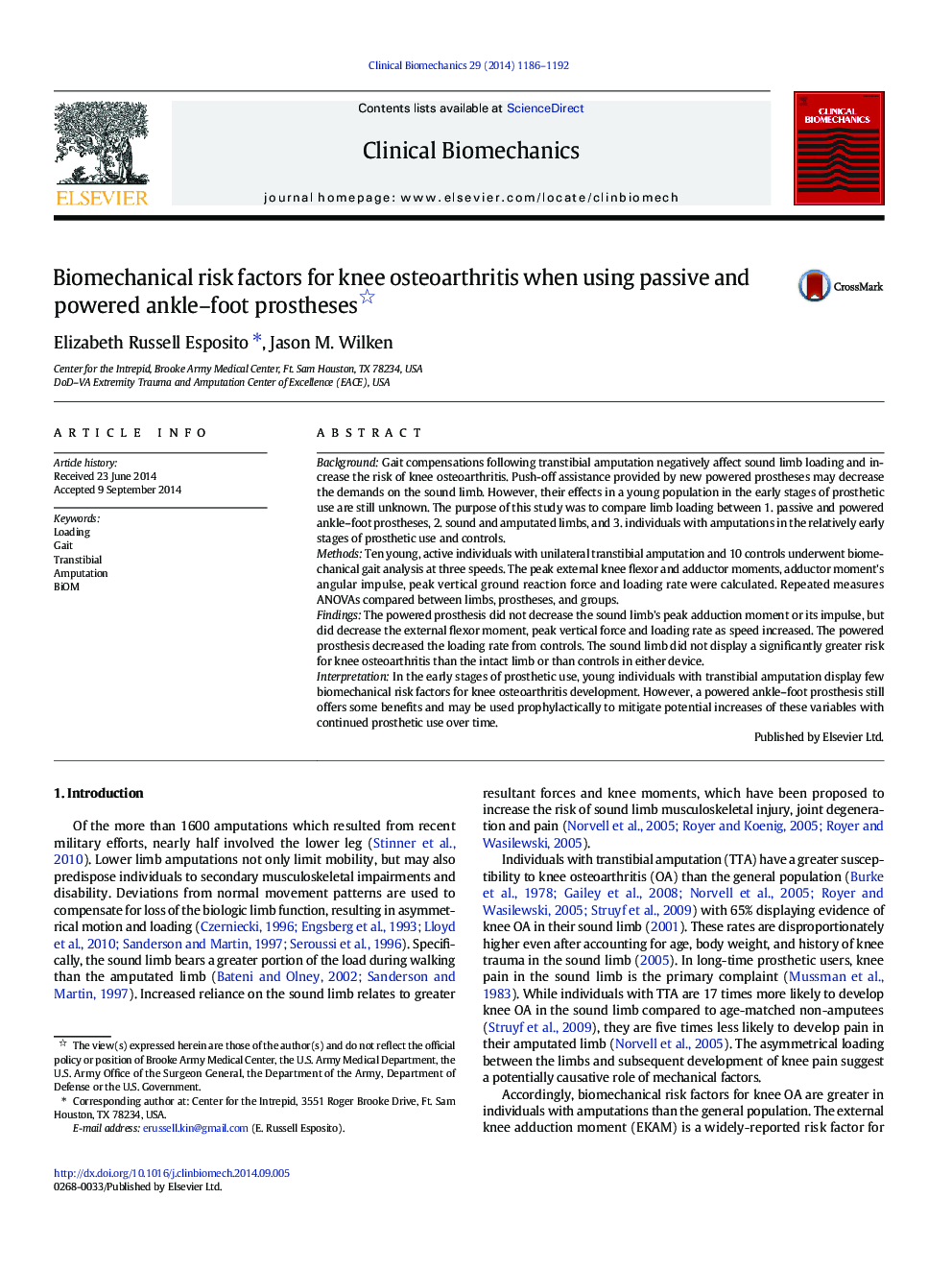| Article ID | Journal | Published Year | Pages | File Type |
|---|---|---|---|---|
| 6204780 | Clinical Biomechanics | 2014 | 7 Pages |
â¢Passive and powered ankle-foot prostheses were compared during level walking.â¢Biomechanical risk factors for knee OA were assessed.â¢Powered devices decreased peak GRF, loading rates and external flexor moments.â¢External knee adductor moments and impulses were unaffected.â¢Overall, individuals with TTA displayed a low risk for knee OA.
BackgroundGait compensations following transtibial amputation negatively affect sound limb loading and increase the risk of knee osteoarthritis. Push-off assistance provided by new powered prostheses may decrease the demands on the sound limb. However, their effects in a young population in the early stages of prosthetic use are still unknown. The purpose of this study was to compare limb loading between 1. passive and powered ankle-foot prostheses, 2. sound and amputated limbs, and 3. individuals with amputations in the relatively early stages of prosthetic use and controls.MethodsTen young, active individuals with unilateral transtibial amputation and 10 controls underwent biomechanical gait analysis at three speeds. The peak external knee flexor and adductor moments, adductor moment's angular impulse, peak vertical ground reaction force and loading rate were calculated. Repeated measures ANOVAs compared between limbs, prostheses, and groups.FindingsThe powered prosthesis did not decrease the sound limb's peak adduction moment or its impulse, but did decrease the external flexor moment, peak vertical force and loading rate as speed increased. The powered prosthesis decreased the loading rate from controls. The sound limb did not display a significantly greater risk for knee osteoarthritis than the intact limb or than controls in either device.InterpretationIn the early stages of prosthetic use, young individuals with transtibial amputation display few biomechanical risk factors for knee osteoarthritis development. However, a powered ankle-foot prosthesis still offers some benefits and may be used prophylactically to mitigate potential increases of these variables with continued prosthetic use over time.
